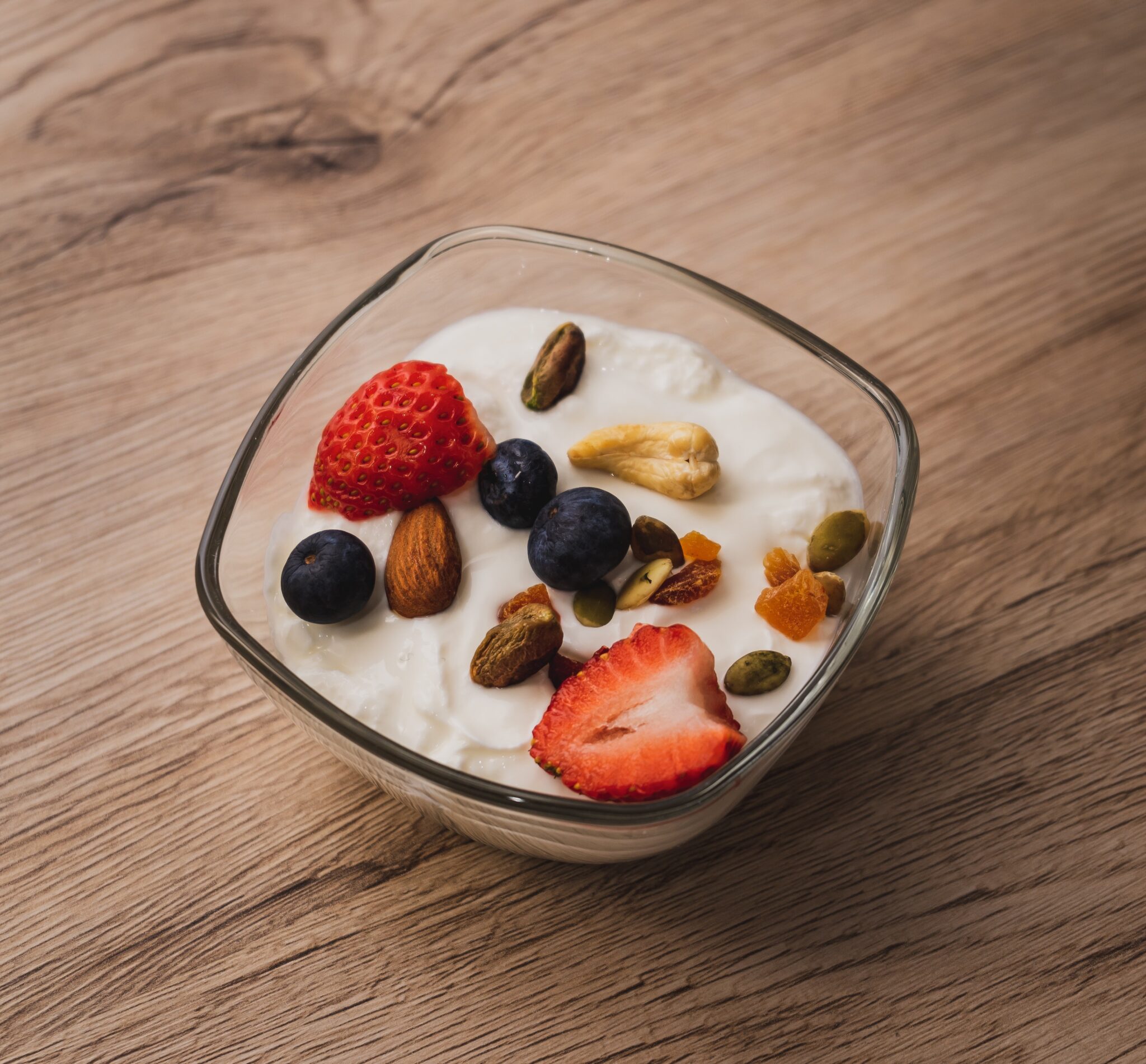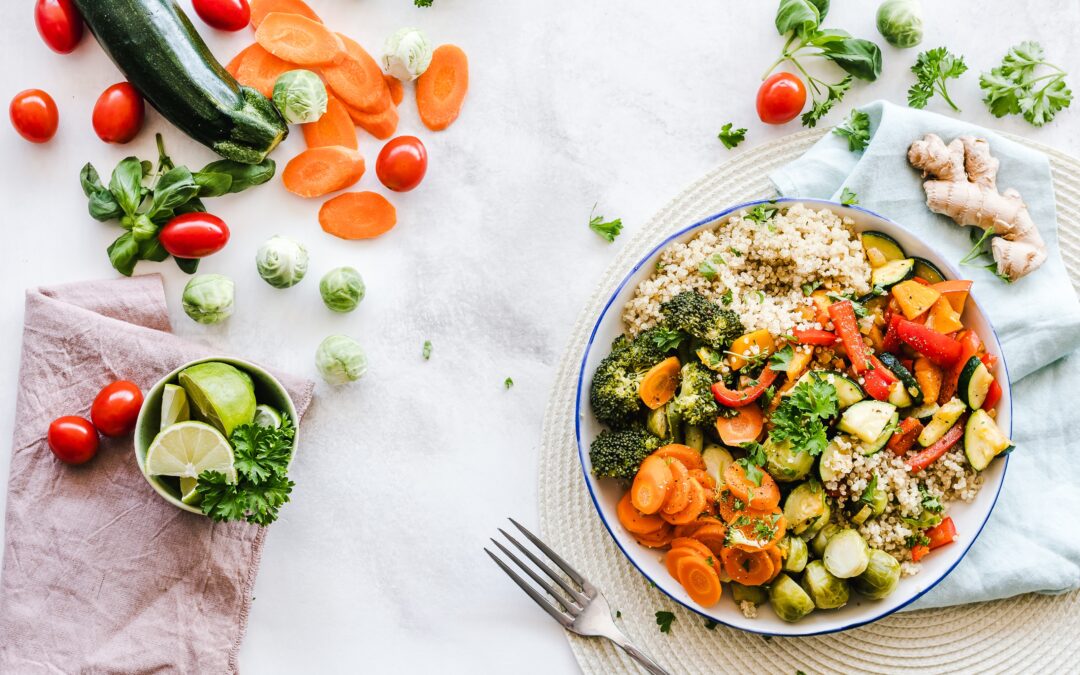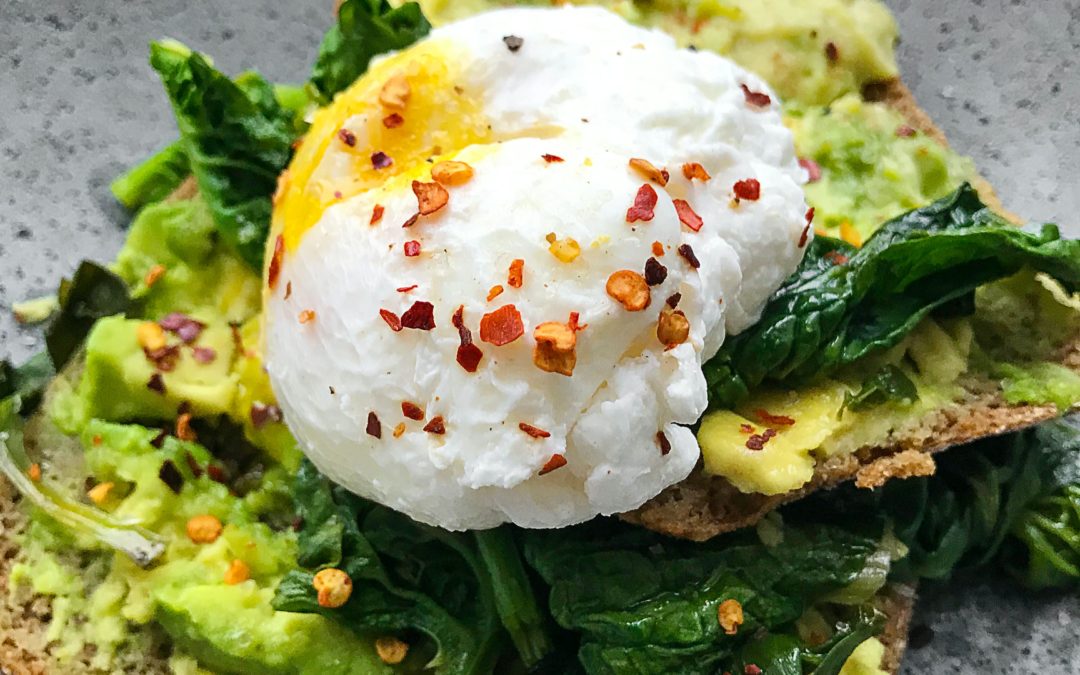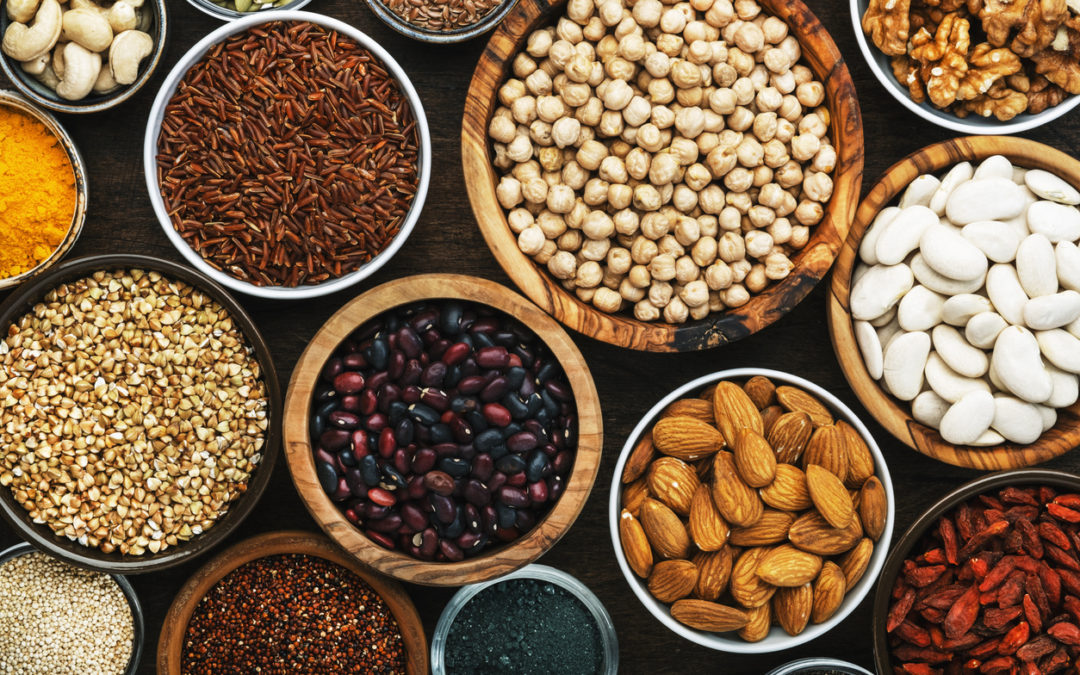
by Jen Owen, N.P. | Feb 17, 2023 | Food Medicine
The connection between gut health and mental health
with Peggy Fisher, our Functional Nutritionist
Did you know that what we eat can affect our mood and how we feel? Interestingly, there is a connection between a healthy and diverse microbiome, the bacteria in our gastrointestinal system, and our mood. Newer research focuses on the microbiota-gut-brain axis – the connection between your gut, its bacteria, and your brain. The trillions of gut microbes are more closely connected to our mood that we have realized in the past.
How so?
Gut microbiota help by producing neurotransmitters – molecules that communicate with our brain including serotonin, dopamine, and melatonin. In fact, the majority of serotonin is produced in our gut! Inflammation in the gut caused by poor diet, alcohol, or an imbalance in bacteria species can interfere with this process, reducing the production of serotonin and other neurotransmitters.
Studies have shown that those with depression and anxiety often have an altered microbiome. But does it work the other way around? Can changing our microbiome affect our mood and anxiety levels? Yes – there is exciting research in both animals and humans showing that changing gut microbiota through diet and probiotics can improve brain neurochemistry and mood.
So, what can you do to nurture your own healthy microbiome?
Probiotics are one way to change bacterial composition in the gut, and there are specific strains that target mood enhancement. While probiotics can be helpful, diet is the factor that has the largest influence on our microbiome.
The best way to nurture a healthy gut microbiome is by eating a diet that is rich in colorful plant-based foods such as vegetables, fruits, whole grains, legumes, nuts and seeds, while minimizing sugar, processed and fried foods, and alcohol. Studies have consistently confirmed that a healthy diet can improve depression and anxiety symptoms, and that changes in diet can result in small shifts in microbial composition within just a day.
Foods that are high in omega 3 fatty acids like salmon or other cold-water fish, nuts, and seeds are specifically helpful in fighting depression. High fiber foods like berries, broccoli and beans are beneficial by providing fiber that feeds a healthy microbiome.
For more personalized information on how nutrition and targeted supplements can support your mood, click here to book a free discovery call with me. I can work with you at The Flourish Center or online.

by Jen Owen, N.P. | Jan 5, 2023 | Flourish Team, Food Medicine
Written by our new Functional Nutritionist, Peggy Fisher.
Many of us start the new year with resolutions, intentions, or goals in mind – often related to improving our health by eating better or exercising more. Yet these resolutions frequently fall to the wayside after several weeks or months. How do we incorporate healthy habits that “stick”?
Here are four keys I’ve found helpful in my work with nutrition clients:
Key #1:
Start small and be specific. Creating new habits can be tough, so start with a small specific goal, something that you feel confident you can achieve and maintain. Success in one or two small areas fosters self-confidence and belief that we can achieve additional goals. Small wins over time can therefore lead to lasting, meaningful change.
As an example, rather than setting a goal of eating healthier, try starting with something more specific and simpler – drinking two glasses of water each morning to start the day hydrated; eating at least one non-starchy vegetable each day; or reducing/eliminating one sugary beverage per day. Once you’ve mastered your initial goal for several months, you can add another.
Key #2:
Keep it real. There are many fad “diets” and lots of confusing information available. Incorporating a wide variety of real, whole plant-based foods including fruits, vegetables, beans, nuts, and seeds in unprocessed forms is the best approach. Fish and lean meats are also good protein sources. Unless there is an allergy or sensitivity, eating a variety of foods is healthier and more sustainable than diets that restrict certain foods or food groups. A wide variety of plant-based foods also promotes a healthy and diverse microbiome.
Key #3:
Have an accountability partner (or partners). Writing an intention down and sharing it with others helps make it tangible. Set up a regular schedule for checking in, whether it’s a quick text message or a weekly phone call. Share your successes and challenges and cheer each other on. It can be motivating and rewarding for both of you!
Key #4:
Remember that if you have a day or week that doesn’t go as planned – that’s okay. It’s not about being perfect (there is no such thing)! It’s about moving slowly in the right direction and recognizing your achievements.
Whether your goal is resolving symptoms or simply improving your overall health, I’d be honored to help you in your journey.
Schedule a FREE Discovery Call with me here.

by Jen Owen, N.P. | Aug 30, 2022 | Food Medicine
Written by our Medical Assistant in the Flourish clinic, Martine:
Hi everyone! Jen has allowed me to write a blog this week to discuss something I’m really passionate about: breakfast!
Some of you know this but before I started working for Jen, I was her patient. Initially I came to see Jen because I was so exhausted all the time. Sometimes I would sleep from 7pm to 7am and still slug through my day as if I hadn’t slept a wink.
I had new and stubborn abdominal fat that I assumed was just the pandemic weight that most of us seemed to gain. And my mood was just…off. I consider myself a happy, positive person but I felt like there was a dark cloud hovering above me that I just couldn’t shake.
After some testing, Jen diagnosed me with insulin resistance. She told me that one of the most important things you can do to help this process is eating protein. You want to eat protein every few hours throughout the day, eat a high protein breakfast, and always have protein at your meals and with any carbs that you eat. By doing that, you’re going to stabilize your blood sugar level in your blood and you’re going to reduce the insulin resistance for those cells.
The other thing that really helps do this is healthy fats.The right fats increase metabolism, stimulate fat burning, cut hunger, optimize your cholesterol profile and can reverse type 2 diabetes and reduce your risk for heart disease. There’s a great book you can read to learn more by Dr Mark Hyman called “Eat Fat, Get Thin”.
Here are three easy breakfasts I make for my husband and myself. They’re all very customizable based on your dietary needs and preferences. All three do include avocado. If you’re not a fan and you need another way to get some good fat, try having some walnuts or Brazil nuts on the side. If you can have dairy, Greek or Nordic yogourt is also a great choice. A drizzle of flax or hemp oil would also be amazing.
Eating breakfasts like this have really been a game changer for me. I have more energy, I’m losing weight, and feeling so much better!
Air Fryer Classic Breakfast
Dairy-free, gluten-free, can be soy-free, can be vegan.
This is a good one for when you’re in a hurry—everything comes together in the air fryer with very minimal effort. You could do the same thing in a regular frying pan as well!
What you’ll need:
Frozen sweet potato fries/tots/cubes
Breakfast sausage (made of whatever you like! Pork, turkey, or meatless)
1-2 eggs depending on how hungry you are
1/2 of an avocado or guacamole
Put the sweet potato and the breakfast sausage in the air fryer at 390 degrees for 5 minutes. You don’t need to add any oil. After that, crack two eggs into the air fryer and season everything with salt and pepper. Feel free to add other spices like paprika, garlic, turmeric, chilli powder, etc.
5 minutes later the egg whites should be set but the yolks should still be soft. Scoop everything out of the air fryer and top with avocado/guacamole.
Lentil Oatmeal Bowl
Dairy-free, glute- free, soy-free, vegan.
This is another easy one and leftovers store pretty well in the fridge. Adapted from the beautiful: https://ohsheglows.com
What you’ll need:
⅓ of a cup red lentils
¼ of a cup oatmeal
1 ½ cup of broth
Combine lentils, oats, and broth in a pot. Bring to a low boil and then reduce the heat and simmer uncovered until thickened. Add any herbs and spices you like. You could add tempeh bacon or turkey bacon crumbles as well.
Top with whatever you like! I personally mix in some nutritional yeast, some arugula, and then top with avocado.
White Bean + Avocado Toast
Dairy-free, soy-free, vegan, can be gluten-free.
Avocado toast is so good on it’s own but blending in some white beans gives it a big extra boost of protein.
What you’ll need:
Cooked and cooled white beans
An avocado (you can use just half if you’d prefer)
Greens of your choice
Bread of your choice
Mash up white beans and avocado. Spread it on your toast and top with greens and a drizzle of oil and spices of your choice. You could also add other veggies like a slice of tomato, or a fried egg. I like to make a little tofu scramble and eat it on the side (that would obviously negate the soy free part).
I hope this helps you see that breakfast can be fun and delicious while supporting your health and wellness goals!
~Martine Fleming, M.A.

by Jen Owen, N.P. | May 5, 2022 | Food Medicine, Integrative Medicine
Insulin resistance is what I call the “pre pre-diabetes” because it’s actually happening in the body before your blood glucose is ever abnormal and you get the diagnosis of pre-diabetes.
Watch the video now or read on….
#1: What are the symptoms?
Some people don’t have any symptoms at all when they have insulin resistance, but most people feel really tired. They feel like they are dragging around, so they go in to see their medical provider. Blood tests otfen show that “nothing is wrong with them”.
Some people have weight gain, especially around the abdomen. Many “crash” after they eat certain foods and they don’t understand why.
For some people insulin resistance affects their mood. It can cause a low level of depression or that feeling of feeling very “hangry”.
#2: What actually is Insulin Resistance?
I could go into a deep physiology lesson about this. The basic thing I want you to know is that insulin is what lets your blood sugar (your glucose) into your cells to give them the energy to do what they need to do. When you have insulin resistance the blood sugar is not getting in, and so your cells don’t have that fuel that they need.
#3: How do you fix it?
I recommend getting your insulin levels checked—it’s part of the routine labs I do here at my clinic in Portland. If you do get it checked, you want to make sure your insulin level is under 5. Slightly over 5 is going to be mild insulin resistance, and the higher it goes, the more insulin resistance you have—meaning the less glucose is getting into your cells
The most important thing you can do to help this process is eating protein. You want to eat protein every few hours throughout the day, eat a high protein breakfast, and always have protein at your meals and with any carbs that you eat.
By doing that, you’re going to stabilize your blood sugar level in your blood and you’re going to reduce that insulin resistance for those cells.
That’s it! It’s actually simple.
Why we’re not checking it in the regular, conventional blood testing, I’m not sure, since insulin resistance is happening in your body well before your blood glucose levels are ever elevagted. We would be heading off a lot of pre-diabetes if people knew about this ahead of time. It would also be saving you hours and hours of being tired and not feeling like yourself because this is happening in your body.
If you’re in Portland, I’d love to see you at my clinic—we can work through this. And if not I hope you’ll see your own provider and have this checked! Or just make sure you’re eating protein throughout the day and with meals to keep that blood sugar stabilized and reduce your risk of insulin resistance, reducing your risk of pre-diabetes and diabetes down the road.

by Jen Owen, N.P. | Jul 9, 2021 | Food Medicine, Mind-Body Medicine
This blog is about returning to the basics.
I’m not sure what it is about our society. We seem to have an “all-or-nothing” approach to health. If we’re not greatly restricting food, exercising in a bootcamp style, or majorly pushing our limits, we don’t really do anything.
I see this time and time again. People show up to my clinic exhausted. When I ask about their health habits, they tell me they try to do those things I mentioned above, but haven’t been able to maintain them.
Well, of course they can’t, and I couldn’t either.
When people focus on hard core health changes and can’t keep with it, they feel like they failed and then they forget to do the very basics to keep their bodies and minds well.
So, today as you read this blog, I want you to do a check-in about each area of life I discuss.
How are you doing in each category?
If any of the basic categories aren’t being fulfilled, start there.
If you’re doing all of these things every day, then come in for an appointment and we’ll dive into what else might be going on.
Water
I know this probably sounds very basic and yet, we all need water to survive. The old adage of drinking 8 glasses of water each day still works pretty well for most people. Yet, when I ask my patients how much water they’re drinking every day, the response is often 2-4 glasses.
And, remember that caffeinated drinks and alcohol are actually dehydrating, so you need extra water if you drink those.
Check-in: Track how much water you drink today and increase if needed.
Tip: Use an opaque water bottle or mason jar for your daily water so you can literally see how much you’re drinking.
Air
Another basic one, I know. During the vitals signs assessment, I check the oxygen saturation of my patients. The level that should be 100% (yes, even with a mask on). Most people come in around 95-97%.
This means that they are likely shallow breathing a good portion of the time.
When we’re running around in fight-or-flight all the time, we don’t take enough deep breaths, so we don’t circulate adequate oxygen to all of our parts. This leaves us feeling even more tired and when our brains don’t get enough oxygen, we can feel light-headed or experience foggy-thinking.
Check-in: Are you getting enough deep breaths in throughout the day?
Tip: Check out this blog and Stop and Breathe.
Food
Another interesting societal norm is that when we want to change our eating patterns, we almost always start with taking things away.
I actually recommend adding things in first. And, I start with the most obvious foods: fruits and vegetables.
Fruits and vegetables are full of the antioxidants our bodies require for proper cellular function and detoxification.
Check-in: Are you eating every color of vegetable/fruit every day?
Tip: Start first by eating the “Rainbow Diet”. Read more about that here.
Sleep
I know you know sleep is important for every cell and system in your body. Yet, it’s often one of the least valued components of flourishing health.
Many people stay up too late or don’t take advantage of times when they can sleep in.
I work with a lot of parents of small children who tell me that after the kids go to bed is the only time they have alone together. I get this. Time alone together is important. And, is there another time you could work out to be alone together? Maybe you could trade with another couple and each take each other’s kids once a week? Get creative.
Sleep truly needs to be at the top of the priority list.
Check-in: How much good quality sleep are you getting every night?
Tips: Sleep when your kids sleep. Go to bed early and relax with a good book if you don’t feel tired yet. Practice good sleep hygiene (Google this term if you don’t know what this is.)
If you still can’t sleep, come in for an appointment and we’ll get this sorted.
Next steps:
Once these four basics of human body function are met, you can start looking into body movement, love, joy, etc.
Those are basic human needs as well, yet when we’re not breathing, drinking water, eating foods that nourish us, or sleeping, not much else can fall into place.
At my clinic, I focus on treating the whole person and my practice has gotten more and more simple over the years. I’ve realized that more than anything people need help with life.
They usually don’t need complicated protocols or extensive health plans. They need help finding balance, peace, and more FUN!
Please stop beating yourself up with restrictive diets and rigorous exercise regimens.
Start with the basics and you’ll be amazed at how much small shifts in your daily life can bring about big changes.
Ready to dive deeper into the basics?
My online program, Health Transfomations is for you!
Our next 8-week session starts on March 10, 2024.
Join the program now!

by Jen Owen, N.P. | May 3, 2021 | Food Medicine
When cholesterol levels are elevated in otherwise healthy people, I begin to wonder if it’s an issue with soluble fiber intake.
A lesser known reason for elevated cholesterol levels has to do with what happens to cholesterol once it reaches the gut. After the liver processes unused cholesterol from the body, it’s released into the intestines. Here, it should bind with fiber from the food you eat and be excreted in the stool. When you don’t eat enough fiber, especially soluble fiber, the cholesterol can actually be recycled back into the blood stream, causing elevated cholesterol levels.
When soluble fiber mixes with liquids, it forms a gel that moves through the digestive tract undigested, absorbing cholesterol and clearing the intestines, thus reducing heart disease by decreasing LDL (“bad cholesterol”) and total cholesterol, among other benefits.
Sources of soluble fiber also causes the stomach to empty at a slower pace, which keeps blood sugar levels from spiking, reducing the risk of diabetes. This also gives you a feeling of fullness in the stomach, causing you to eat less, and possibly lose weight. Soluble fiber decreases constipation and diarrhea, reducing hemorrhoids and possibly colon cancer.
All one has to do to reap these benefits is add more soluble fiber to your diet. Here are some of the foods highest in soluble fiber:
- oats and oat bran
- psyllium husk
- flax seeds
- nuts
- beans, especially black, navy, kidney, and soy
- vegetables, especially avocado, brussels sprouts, sweet potatoes, asparagus, and turnips
- fruits, especially figs, oranges, pears, apricots, nectarines, grapefruit, and mangoes
All sources of fiber help with this process, but the above foods will help to keep things moving in the digestive tract, hopefully lowering your risk of heart disease, type II diabetes, and colon issues.
Please add your comments and questions below and be sure to share this post with your family and friends who will benefit.
If you would like more support with your cholesterol, feel free to schedule a consultation with me.











Recent Comments